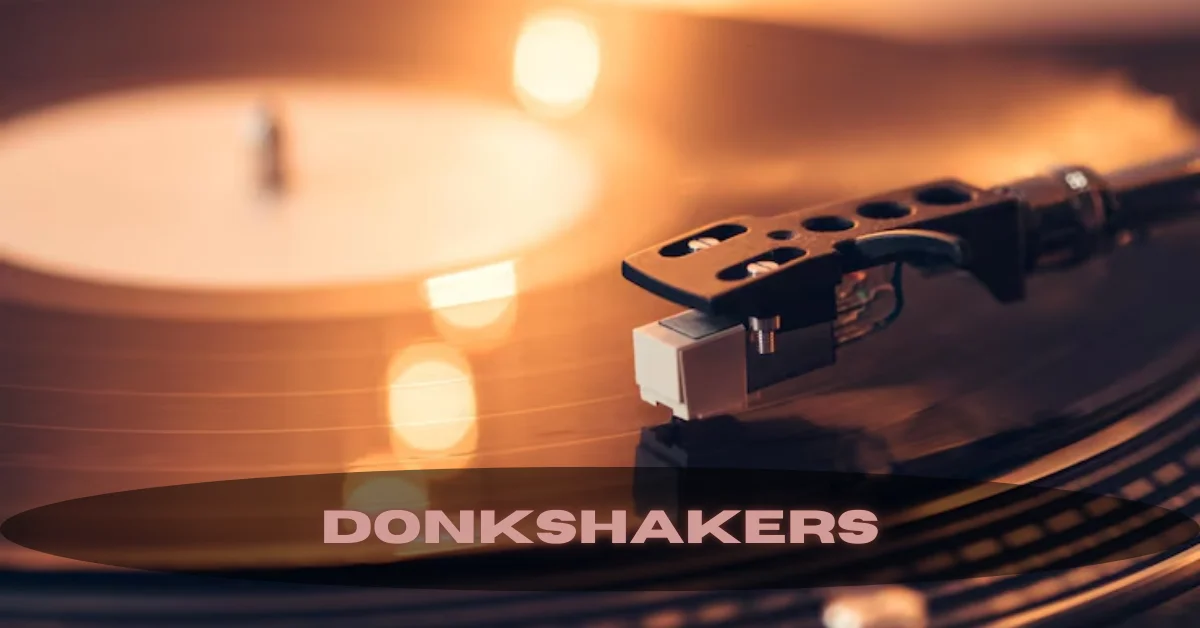
Car culture has always been about more than just horsepower, paint jobs, and rims. It’s a lifestyle where music plays a central role, turning vehicles into moving stages for self-expression. One of the terms deeply rooted in this culture is “Donkshakers.” While it may sound niche, Donkshakers represent an important piece of the puzzle when it comes to sound systems, automotive customization, and the evolution of street music scenes. In this article, we’ll dive deep into what Donkshakers are, their history, significance in car culture, and how they’ve influenced both music and lifestyle communities across the world.
Understanding the Term “Donkshakers”
To understand Donkshakers, one must first break the term into two parts: “Donk” and “Shakers.”
-
Donk: In automotive slang, “donk” refers to a type of customized American car, most notably Chevrolet Impalas and Caprices from the 1970s. These vehicles are raised on oversized wheels—sometimes 26 inches or larger—and feature flashy paint jobs, luxury interiors, and most importantly, powerful sound systems. Donks originated in the Southern United States, particularly Florida, where they became an iconic part of urban car culture.
-
Shakers: The “shakers” element refers to subwoofers and bass systems in these cars. Subwoofers produce deep, thumping low-frequency sounds that literally shake the ground and vibrate through neighborhoods. The stronger and cleaner the bass, the more respect a car earns in the Donk community.
Put together, Donkshakers represent the enormous, chest-thumping sound systems built into Donk cars, turning them into rolling nightclubs and showcases of musical power.
The Origins of Donkshakers
The roots of Donkshakers stretch back to the rise of car customization in the 1980s and 1990s, when hip-hop culture began to dominate urban life. Cities like Miami, Atlanta, and Houston became epicenters of bass-heavy music and car shows.
-
Southern Hip-Hop Influence: The Southern rap scene, with its love for heavy bass and trunk-rattling beats, provided the perfect soundtrack for Donks. Artists like Trick Daddy, 2 Live Crew, and later Rick Ross became tied to the culture. Their music demanded powerful systems, and Donkshakers became the solution.
-
Car Audio Competition: Around the same time, competitive car audio shows were growing in popularity. Enthusiasts didn’t just want their systems to sound good—they wanted them to be louder, deeper, and more earth-shaking than anyone else’s. Donkshakers emerged as a specialized way of achieving this goal in Donk cars.
-
Neighborhood Culture: Beyond shows, Donkshakers became a street phenomenon. People would cruise neighborhoods, stop at parks, or pull up at block parties with their bass pounding, effectively turning any spot into a concert venue.
The Technology Behind Donkshakers
The magic of Donkshakers lies in their audio engineering. Building a Donkshaker system isn’t just about buying big speakers—it’s about designing a setup that maximizes bass while maintaining clarity.
Key Components:
-
Subwoofers: The heart of Donkshakers. Often, cars are fitted with multiple 12-inch, 15-inch, or even 18-inch subs that can handle thousands of watts.
-
Amplifiers: These provide the power necessary to push subwoofers to their limits. High-quality amps ensure clean power delivery.
-
Custom Enclosures: Boxes designed specifically to house subs enhance sound output. Ported enclosures, in particular, are popular for Donkshakers because they amplify bass frequencies.
-
Sound Dampening: Since bass vibrations can rattle and distort car panels, enthusiasts use insulation materials to keep the sound clean and avoid unwanted buzzing.
-
Battery Systems: With such high power demands, Donkshakers often require extra batteries or alternators to keep the system running without draining the vehicle.
Performance Goals:
The ultimate goal of Donkshakers is to produce bass so deep and powerful that it shakes not only the car but also the environment around it. At competitions, judges measure sound pressure levels (SPL), rewarding vehicles that can sustain extreme decibels without distortion. On the street, the goal is simpler: turn heads and dominate the block.
Donkshakers in Car Culture
The rise of Donkshakers transformed Donk culture into more than just a car trend—it became a lifestyle.
-
Car Shows and Competitions: Events like custom car meets and audio expos feature Donkshakers as crowd favorites. Spectators gather around to feel the bass as much as to hear it.
-
Street Presence: In neighborhoods across the South, Donkshakers became symbols of pride and creativity. They showcased not just wealth, but also technical skill in audio engineering.
-
Cultural Symbolism: Donkshakers represent freedom, self-expression, and individuality. They’re about standing out, being bold, and making sure your presence is impossible to ignore.
Music and Donkshakers
Donkshakers and music go hand in hand. Certain genres thrive on their ability to deliver chest-thumping bass:
-
Miami Bass: Known for its booming low-end, this genre was practically made for Donkshakers.
-
Hip-Hop & Trap: With deep 808s and heavy basslines, modern rap sounds perfect in a Donkshaker system.
-
Electronic Dance Music (EDM): Some enthusiasts cross into EDM territory, where drops and bass-heavy tracks push systems to their limits.
In many ways, Donkshakers are as much musical instruments as they are car accessories. They bring new life to tracks, revealing layers of sound that smaller systems simply can’t reproduce.
The Lifestyle Impact
Beyond the music and the cars, Donkshakers have become a cultural marker. They symbolize community gatherings, weekend cruising, and the shared joy of music. They are also a form of competition, where bragging rights are earned not by speed, but by sound.
-
Fashion and Style: Just like Donk cars themselves, Donkshakers influence fashion. Bright colors, flashy designs, and bold statements mirror the aesthetics of the cars and sound systems.
-
Entrepreneurship: Custom car audio shops thrive by catering to Donkshaker enthusiasts, offering installations, upgrades, and repairs.
-
Generational Influence: Younger enthusiasts learn from older ones, keeping the tradition alive while blending in modern tech like Bluetooth and digital tuning.
Criticism and Challenges
While Donkshakers are beloved by enthusiasts, they are not without controversy.
-
Noise Complaints: Extremely loud systems often lead to complaints from neighbors and even legal issues, as noise ordinances in many cities restrict how loud cars can play music.
-
Cost: Building a top-tier Donkshaker system is expensive, often costing thousands of dollars for equipment, installation, and modifications.
-
Vehicle Wear: The weight of heavy subs and enclosures can strain vehicles, and constant vibrations may cause wear on car parts over time.
Despite these challenges, the culture continues to thrive because for many, the joy and pride outweigh the drawbacks.
The Future of Donkshakers
As technology advances, Donkshakers are evolving too. Modern audio equipment is more efficient, digital tuning allows for precision sound control, and lightweight materials make builds more practical. The internet and social media have also expanded the culture, allowing enthusiasts to showcase their creations to global audiences.
We may see future Donkshakers incorporating eco-friendly tech, such as energy-efficient amplifiers or solar charging systems. Virtual reality and metaverse car shows may also give Donkshakers a stage far beyond the neighborhood block.
Conclusion
Donkshakers are more than just car sound systems—they are an art form, a cultural movement, and a powerful symbol of individuality. From their roots in Southern car culture to their impact on music and lifestyle, they continue to represent creativity, freedom, and community. Whether blasting Miami Bass on the streets of Florida or competing at an SPL showdown, Donkshakers shake more than just cars—they shake culture itself.





